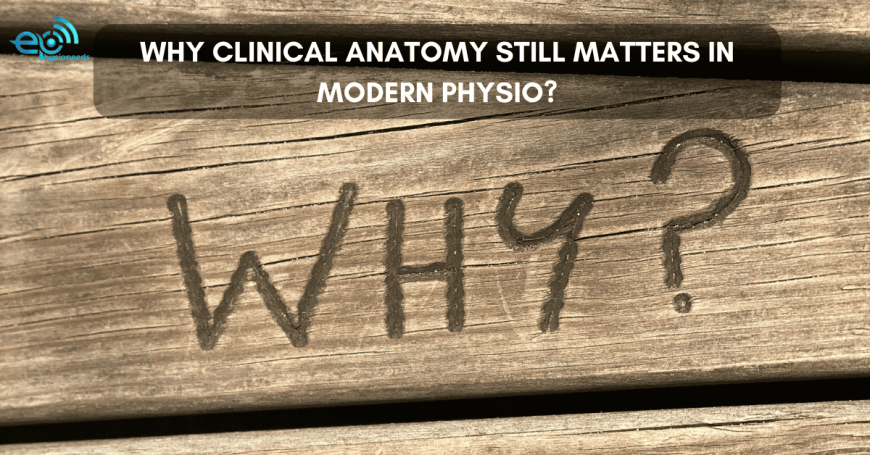Why Clinical Anatomy Still Matters in Modern Physio
Clinical anatomy is the foundation of physiotherapy. As modern rehabilitation techniques evolve and technology continues to influence clinical practices, some may assume anatomy is a “basic” or “introductory” subject.

Clinical anatomy is the foundation of physiotherapy. As modern rehabilitation techniques evolve and technology continues to influence clinical practices, some may assume anatomy is a “basic” or “introductory” subject. But the truth is, it remains one of the most powerful tools a physiotherapist can use—especially in accurate diagnosis, manual therapy, and targeted treatment planning.
What Is Clinical Anatomy?
Clinical anatomy is the study of human body structures with direct relevance to clinical practice. Unlike general anatomy, it focuses specifically on the areas most likely to be involved in injuries, dysfunctions, or rehabilitation.
Whether it’s understanding dermatomes in nerve pain or knowing the depth of muscles during dry needling, clinical anatomy shapes the precision and confidence in every move a physio makes.
Why It Still Matters in Modern Physiotherapy
1. Accurate Assessment and Diagnosis
Clinical anatomy helps physiotherapists identify the exact structures causing pain or limitation—be it nerve, muscle, joint, or fascia. This accuracy leads to better outcomes and less trial-and-error.
2. Better Manual Therapy Skills
Understanding the layered structure of tissues allows therapists to apply techniques like IASTM, soft tissue mobilization, or joint manipulation more precisely and effectively.
3. Safer Application of Techniques
From dry needling to cupping, knowing the underlying anatomy minimizes risk and improves safety. This is especially vital around neurovascular structures or deeper muscles.
4. Custom Rehab Programs
Knowing how different structures interact allows physios to tailor rehabilitation plans that address not just symptoms but root causes.
5. Enhanced Clinical Reasoning
Clinical anatomy provides the logic behind decision-making, helping practitioners choose the right technique at the right time with confidence.
Real-Life Applications in Today’s Clinics
Dry Needling & Trigger Point Therapy: Precise needle placement requires in-depth anatomical knowledge.
Post-Surgery Rehab: Knowing which tissues were affected helps plan rehab phases accordingly.
Sports Injuries: Identifying exact muscular or ligamentous strains helps in performance recovery.
Sciatica & Nerve Issues: Understanding nerve pathways (like the sciatic nerve) is crucial in pain mapping and treatment.
FAQs: Clinical Anatomy & Physiotherapy
Q1. Can I practice physiotherapy without learning clinical anatomy?
A: You can, but your effectiveness will be limited. Clinical anatomy enhances precision, safety, and results—especially in hands-on techniques.
Q2. Is clinical anatomy useful for treating sciatica?
A: Absolutely. Sciatica involves nerve pathways, muscle tension, and disc-related issues. Clinical anatomy helps map the exact pain source and choose appropriate techniques.
Q3. How can I improve my knowledge of clinical anatomy?
A: Take specialized certification courses (like the ones on E-Physioneeds), study with 3D anatomy tools, and review real case studies.
Q4. Does clinical anatomy help with dry needling and taping?
A: Yes, both techniques require exact anatomical landmarks to be effective and safe.
Q5. Is clinical anatomy only useful for manual therapy?
A: No, it’s essential for all treatment methods—from exercise prescription to electrotherapy placement.
Conclusion
Clinical anatomy is not just academic—it’s practical, powerful, and essential. In a time where new techniques and technologies are entering the world of rehab, anatomy remains the compass that guides physiotherapists to provide safe, effective, and personalized care.
If you're looking to upgrade your skills, consider enrolling in a clinical anatomy-focused certification from E-Physioneeds to build a solid foundation for advanced practice.

 Daulatdb
Daulatdb